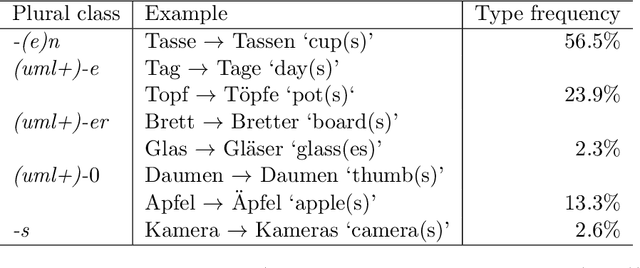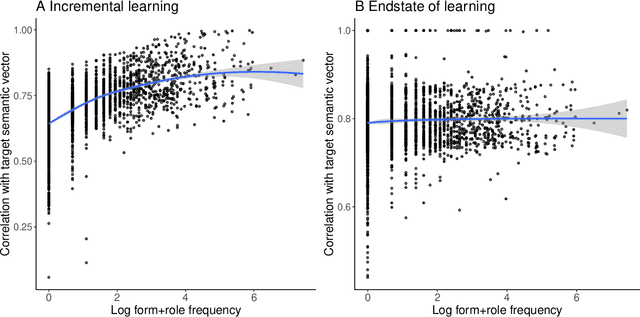Modeling morphology with Linear Discriminative Learning: considerations and design choices
Paper and Code
Jun 15, 2021



This study addresses a series of methodological questions that arise when modeling inflectional morphology with Linear Discriminative Learning. Taking the semi-productive German noun system as example, we illustrate how decisions made about the representation of form and meaning influence model performance. We clarify that for modeling frequency effects in learning, it is essential to make use of incremental learning rather than the endstate of learning. We also discuss how the model can be set up to approximate the learning of inflected words in context. In addition, we illustrate how in this approach the wug task can be modeled in considerable detail. In general, the model provides an excellent memory for known words, but appropriately shows more limited performance for unseen data, in line with the semi-productivity of German noun inflection and generalization performance of native German speakers.
 Add to Chrome
Add to Chrome Add to Firefox
Add to Firefox Add to Edge
Add to Edge